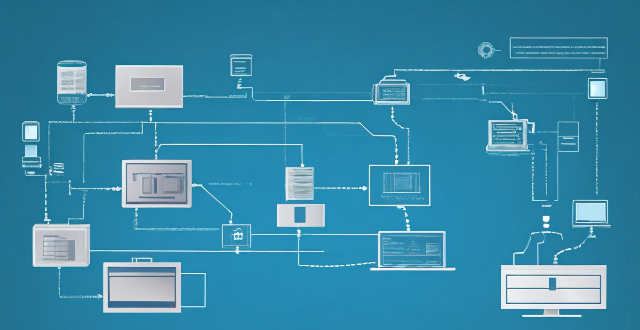Firewalls are crucial for network security protection, acting as a barrier between trusted and untrusted networks to prevent unauthorized access and block malicious traffic. They monitor network activity for potential threats, with various types including packet-filtering, stateful inspection, application-level, and next-generation firewalls. Firewalls offer benefits such as access control, threat prevention, visibility and auditing, and compliance enforcement. Best practices for deploying firewalls include implementing a multi-layered defense strategy, regularly updating firewall rules and policies, monitoring logs and alerts, conducting regular penetration testing, and training staff on firewall management and maintenance.

The Role of Firewalls in Network Security Protection
Firewalls play a crucial role in network security protection by acting as a barrier between trusted and untrusted networks. They are designed to prevent unauthorized access, block malicious traffic, and monitor network activity for potential threats. In this article, we will discuss the various aspects of firewalls and their significance in maintaining network security.
What is a Firewall?
A firewall is a network security system that monitors and controls incoming and outgoing network traffic based on predefined security rules. It can be hardware-based or software-based and is typically deployed at the edge of a network to protect it from external threats.
How do Firewalls Work?
Firewalls work by analyzing each packet of data that enters or leaves the network. They compare the packet's source and destination addresses, port numbers, and protocol type against a set of predefined rules. If the packet matches any of the rules, the firewall either allows or blocks the traffic accordingly.
Types of Firewalls
There are several types of firewalls, including:
1. Packet-filtering Firewalls: These firewalls examine each packet's header information and make decisions based on the source and destination IP addresses, port numbers, and protocol types.
2. Stateful Inspection Firewalls: These firewalls go beyond packet filtering by examining the state of the connection. They maintain a record of all active connections and allow only legitimate traffic based on established sessions.
3. Application-level Firewalls: These firewalls operate at the application layer and can inspect application data to ensure compliance with specific policies.
4. Next-generation Firewalls (NGFW): These advanced firewalls combine traditional firewall capabilities with additional features like intrusion prevention, malware detection, and content filtering.
Benefits of Using Firewalls
Firewalls offer several benefits in terms of network security protection, including:
Access Control
Firewalls provide granular control over which devices can access the network and what services they can use. This helps prevent unauthorized access and ensures that only trusted devices can communicate with the network.
Threat Prevention
Firewalls can detect and block malicious traffic before it reaches the internal network. They can identify known attack patterns and signatures, such as SQL injection or cross-site scripting attacks, and prevent them from causing damage.
Visibility and Auditing
Firewalls generate logs that provide valuable insights into network activity. These logs can be analyzed to identify potential security breaches or policy violations, allowing administrators to take corrective action promptly.
Compliance Enforcement
Firewalls help organizations comply with regulatory requirements by enforcing access controls and monitoring network activity for non-compliant behavior. For example, they can restrict access to sensitive data based on user roles or enforce encryption for confidential communications.
Best Practices for Deploying Firewalls
To maximize the effectiveness of firewalls in network security protection, organizations should follow these best practices:
1. Implement a Multi-layered Defense Strategy: Deploy multiple firewalls at different points in the network to create layers of defense. This approach helps mitigate the risk of a single point of failure and provides redundancy in case one firewall fails or becomes compromised.
2. Regularly Update Firewall Rules and Policies: Keep firewall rules and policies up-to-date to ensure they reflect current security requirements and threat landscape. Remove unnecessary rules and consolidate overlapping ones to reduce complexity and improve performance.
3. Monitor Firewall Logs and Alerts: Regularly review firewall logs and alerts to identify potential security incidents or policy violations. Use automated tools to analyze large volumes of log data efficiently.
4. Conduct Regular Penetration Testing: Perform penetration testing on the firewall infrastructure periodically to identify vulnerabilities and test its effectiveness in blocking real-world attacks. Address any weaknesses found during testing promptly.
5. Train Staff on Firewall Management and Maintenance: Ensure that staff responsible for managing and maintaining firewalls have adequate training and expertise. This includes understanding how to configure firewall rules effectively, interpret log files, and respond to security incidents.
In conclusion, firewalls play a critical role in network security protection by providing access control, threat prevention, visibility, auditing, and compliance enforcement. Organizations must implement best practices to maximize their effectiveness and ensure continued protection against evolving threats.